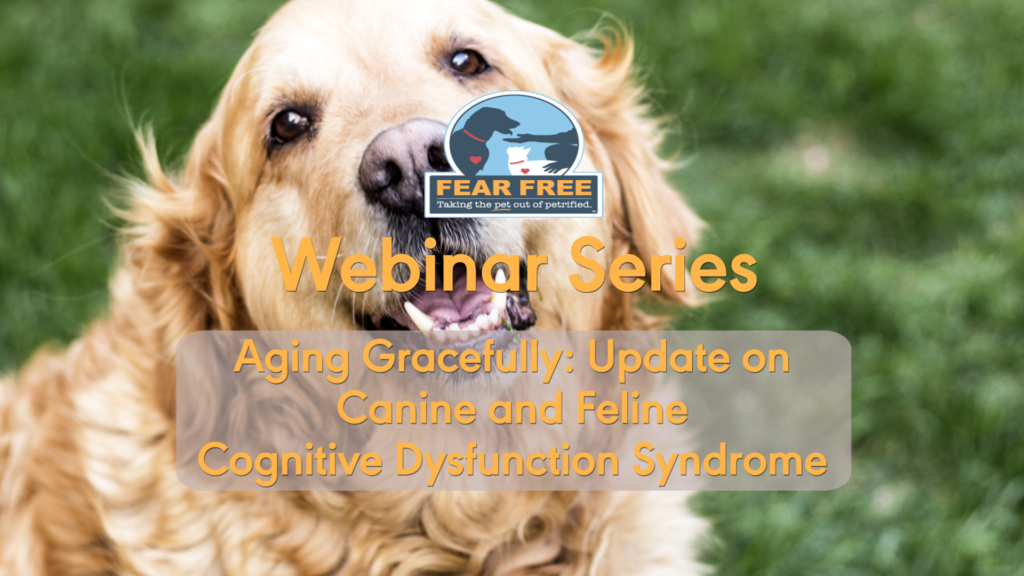
Creating a high-quality end-of-life period is a critical aspect of veterinary practice. Although we can’t prevent the inevitable passing of a beloved pet, we can advocate for patient comfort and support pet parents through end-of-life care decisions. Fear Free Certified® Professionals are uniquely qualified to help pets with terminal and progressive diseases overcome not only physical barriers to increased life quality but also emotional and behavioral impacts. Here, we discuss best practices to improve quality of life (QOL) during a pet’s last days.
Assessment and Planning
Effective end-of-life care begins with a thorough patient assessment and history to evaluate the pet’s current QOL, establish management goals, and develop a treatment plan in partnership with the pet owner. Many physical, emotional, and social factors contribute to patient comfort and wellbeing, with each weighted differently for individual pets. A professional QOL scale provides clients and the veterinary team with an objective measurement tool to track disease progression and QOL changes, facilitating discussions about palliative care or euthanasia.
Palliative and Hospice Care
Palliative and hospice care focus on reducing the impact of disease symptoms, improving comfort when a cure is unlikely, and supporting pet families during a pet’s final days. Many hospice caregivers provide in-home services, which can help reduce stress levels and give the family more time with the pet. Hospice care often culminates in euthanasia or a medically assisted natural death.
Supporting Quality of Life
End-of-life care should focus primarily on implementing strategies to manage pet comfort. Pet professionals should consider the following QOL assessment categories to develop effective interventions:
- Happiness — Increase pet happiness by modifying activities they once enjoyed and continuing to provide enjoyable social interactions and play.
- Mental state — Pets experiencing pain, cognitive decline, or other effects of chronic illness may also suffer from fear, anxiety, and stress that impacts life quality. Address behavioral changes with medications, supplements, training, calming aids, and household management.
- Pain — Uncontrolled pain is the hallmark of reduced QOL. Address pain early and aggressively, emphasizing the importance of pain control to clients. Medications, rehabilitation, and alternative treatments are viable options.
- Appetite — Consider appetite stimulants, antiemetics, and high-energy diets for pets dealing with anorexia or weight loss.
- Hygiene — Pets unable to stay clean are uncomfortable and at risk for skin infections. Work with clients to find solutions that are not overly burdensome, such as bathing, diapers or belly bands, or medications to control urinary and GI conditions.
- Hydration — At-home subcutaneous fluids are an excellent solution for keeping chronically ill pets hydrated when they are unable or unwilling to drink enough water.
- Mobility — Poor mobility can limit a dog’s ability to interact with the world around them. Address mobility by selecting safe pain and anti-inflammatory medications and by modifying the home environment with rugs or runners to provide traction. Support harnesses and carts may also be appropriate.
Client Support
Open and empathetic communication with pet owners is essential during the end-of-life period. Veterinary professionals should provide education about the pet’s condition, prognosis, and care options and remain open-minded and non-judgemental during discussions. End-of-life care can take a physical, emotional, and financial toll on clients. Offering simple treatment regimens with the most bang for their buck can reduce the caregiving burden and prevent breakdowns in the human-animal bond.
With a compassionate approach, veterinary professionals can provide exceptional care and QOL during a pet’s final days. The Dechra Quality of Life Survey helps veterinary professionals and pet owners take a step back to objectively assess the pet’s current state and track changes over time. We encourage pet professionals to share the survey with clients and use their answers to discuss treatments and guide decision-making.
For pets facing a lymphoma diagnosis or relapse whose owners cannot or do not wish to pursue chemotherapy, consider Laverdia, an oral drug designed to target cancer cells and spare healthy ones to prolong time to progression (TTP) in canine lymphoma. Learn more about Laverdia here.
This article was reviewed/edited by board-certified veterinary behaviorist Dr. Kenneth Martin and/or veterinary technician specialist in behavior Debbie Martin, LVT.
Want to learn more about Fear Free? Sign up for our newsletter to stay in the loop on upcoming events, specials, courses, and more by clicking here.
Brought to you by our friends at Dechra.







